 Sanssouci Palace, Germany
Sanssouci Palace, GermanySans souci, which means “without concerns” in French, was the summer palace and private refuge of the King of Prussia, Freidrich the Great. A place where he could retreat without care to relax in the company of his greyhounds, the Schloss Sanssouci or Sanssouci Palace is located in the city of Potsdam, bordering Berlin. Built on raised ground with cascading vineyard terraces, the architecture of Sanssouci is more ‘Frederician Rococo’ because of a strong influence of the King’s personal tastes.
The Palace was designed by Georg Wenzeslaus von Knobelsdorff, with construction starting in 1745 and completed by Jan Bouman in 1747. King Frederick William IV expanded and improved it in the 19th century and, after it somehow emerged from World War II without a scratch, Sanssouci became a tourist attraction in East Germany.
Sights in Sanssouci not to be missed are the Pantheonesque gold and white Marble Hall reception area, the Voltaire Room (the French philosopher was a frequent palace guest), Antoine Watteau’s paintings (one of Friedrich’s favorite artists) and the magnificent Neues Palace (New Palace). Sanssouci became a UNESCO World Heritage site in 1990.
© Stiftung Preußische Schlösser und Gärten Berlin-Brandenburg
For normal folk, Potsdam’s Sanssouci is a relaxing royal treat only 30 minutes away by train from bustling Berlin. In French, the palace’s name means “without a care;” it was a quiet refuge for the Prussian king. His final wish was to be buried there, a desire not granted until after German reunification.
This UNESCO World Heritage Site, built between 1745 and 1747, is known for its treasures inside and out.
Highlights include the white and gold Marble Hall reception area, loosely based on the Pantheon in Rome, the many paintings by one of Friedrich’s favorite artists, Antoine Watteau, and the Voltaire Room, with its carvings of birds, flowers and fruits, named after the French philosopher and frequent palace guest. The large landscaped park is dotted with fountains, with faux ruins and classical statues among the many points of interest. Also at Sanssouci is the splendid Neues Palace (New Palace), added to commemorate the end of the Seven Year’s War, a reconstructed Dutch windmill, the Orangerie, which houses a gallery, and the Drachenhaus (Dragon House), a pagoda-style building that now holds a pleasant café for park visitorsSanssouci is located in Potsdam, just outside of Berlin, and is easily accessible by public transportation and car. The site, which stretches out for 2 kilometers west of Potsdam’s city center, is open later from Spring to Fall; music festivals are held annually on the grounds. The palace and individual buildings require ticket purchase for entry; many are only accessible with an official guided tour. Day tickets and family tickets providing access to multiple museums are available. If you are visiting with children don’t miss the Historische Mühle (Historical Windmill)
No other palace is so closely linked with the personality of Frederick the Great as Sanssouci Palace. The king’s summer residence was ultimately his favorite place and sanctuary in difficult times.
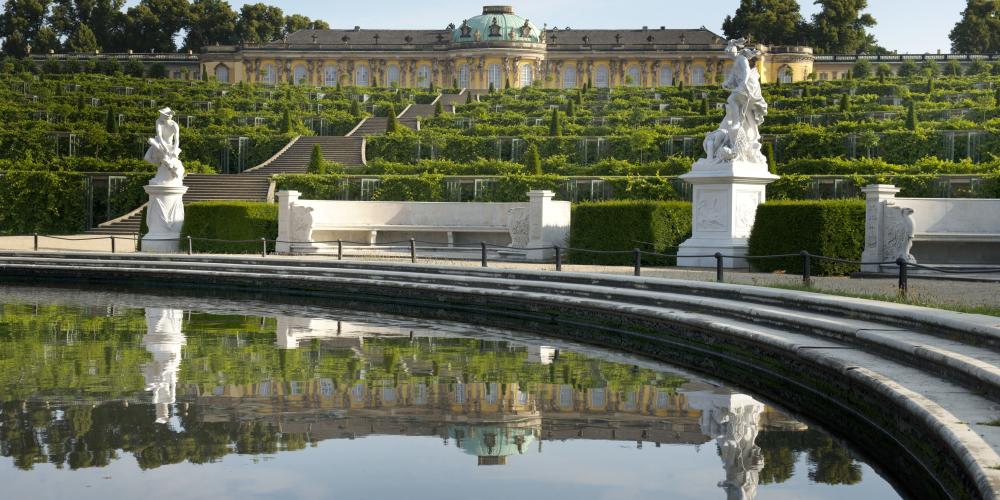
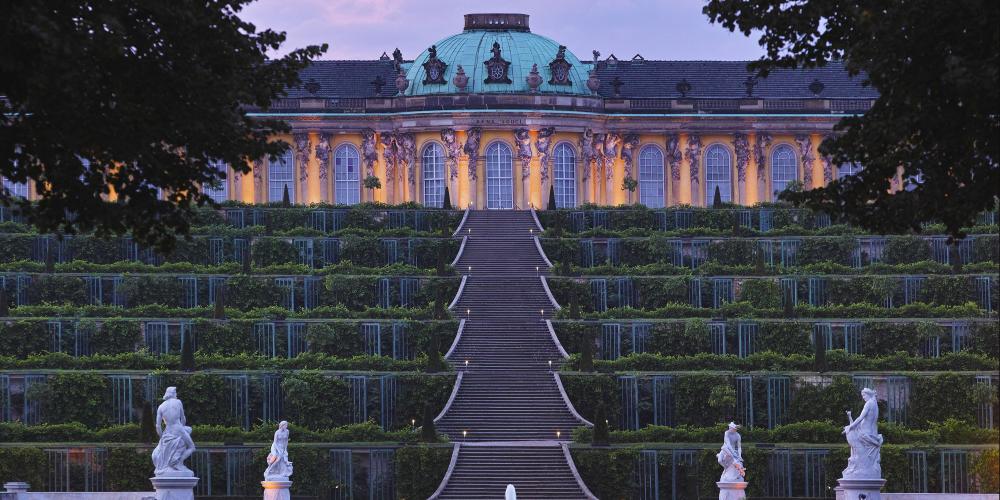
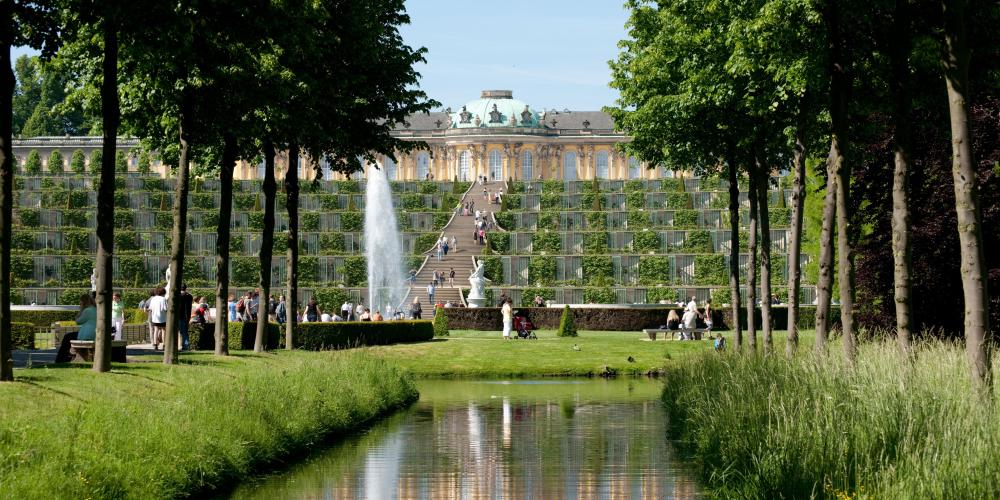
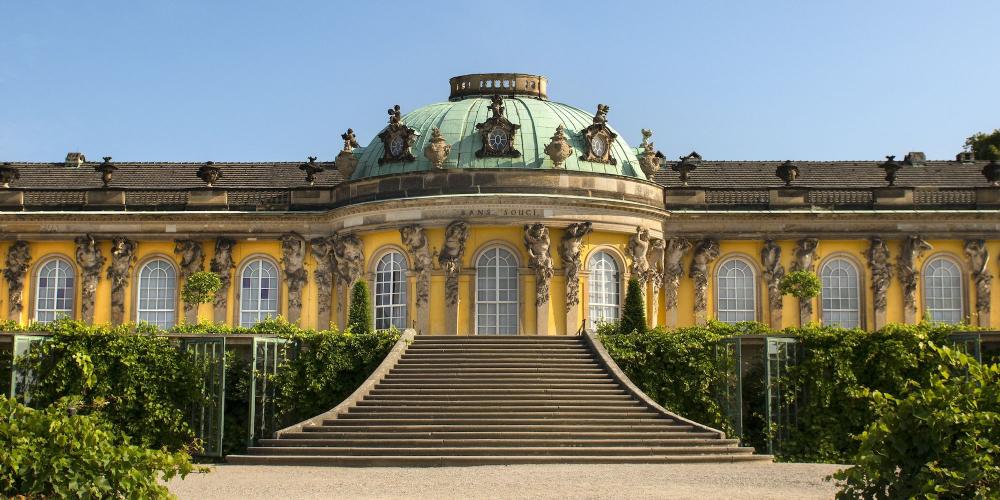
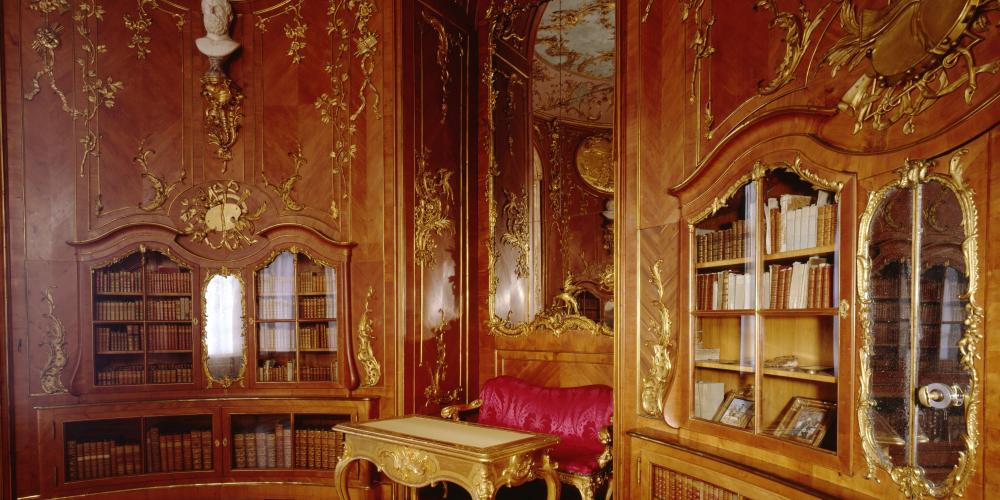
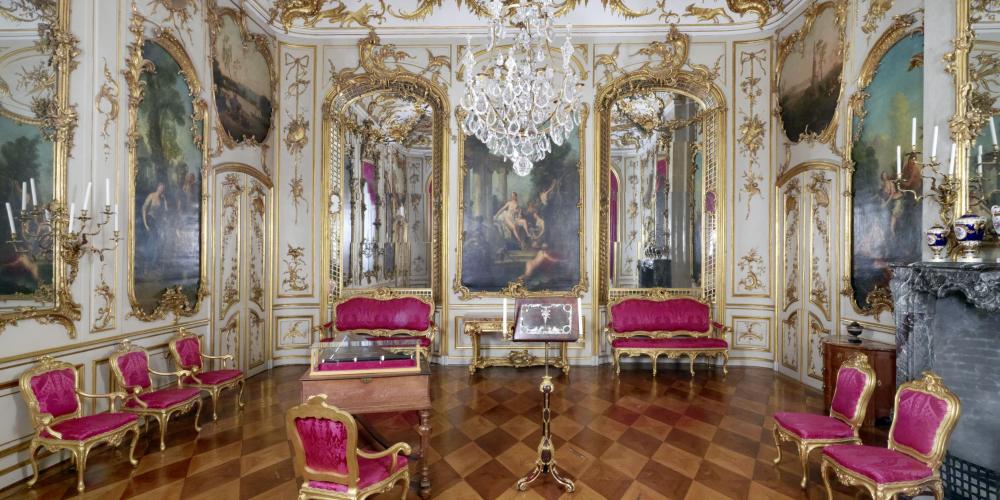
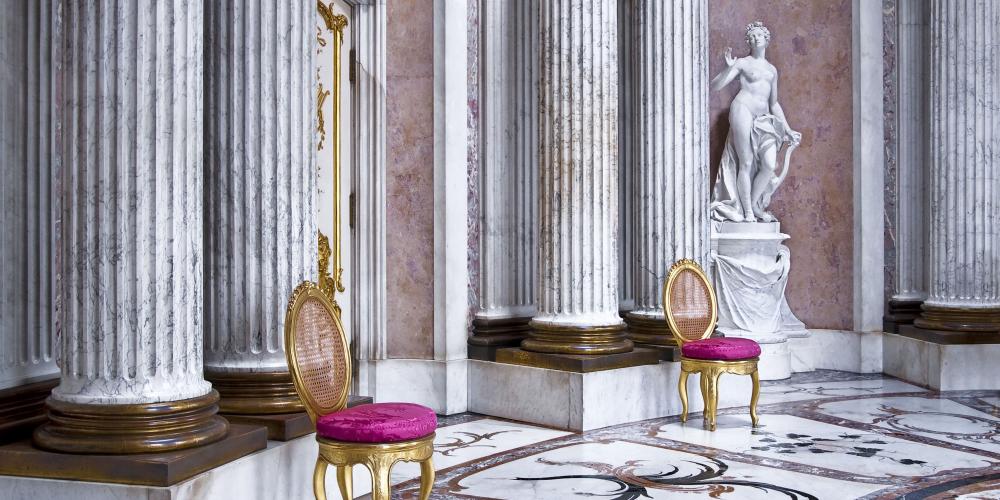
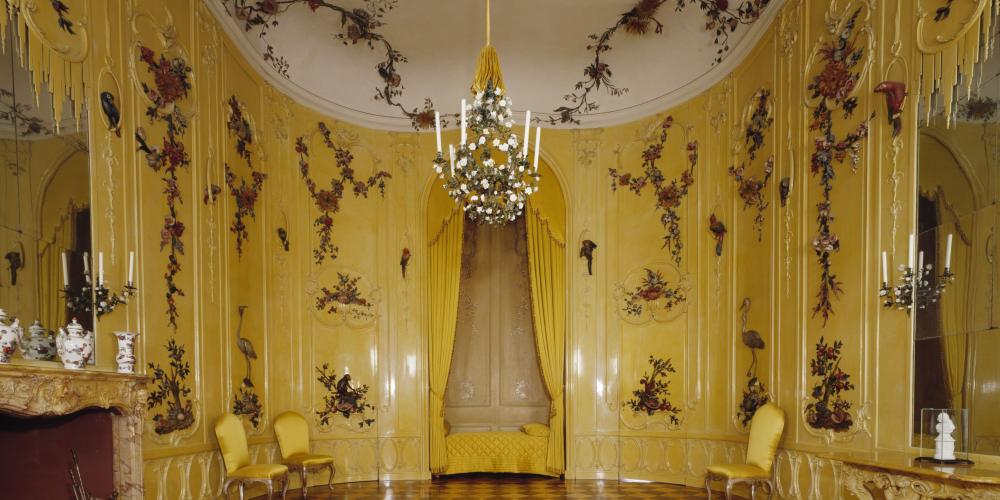
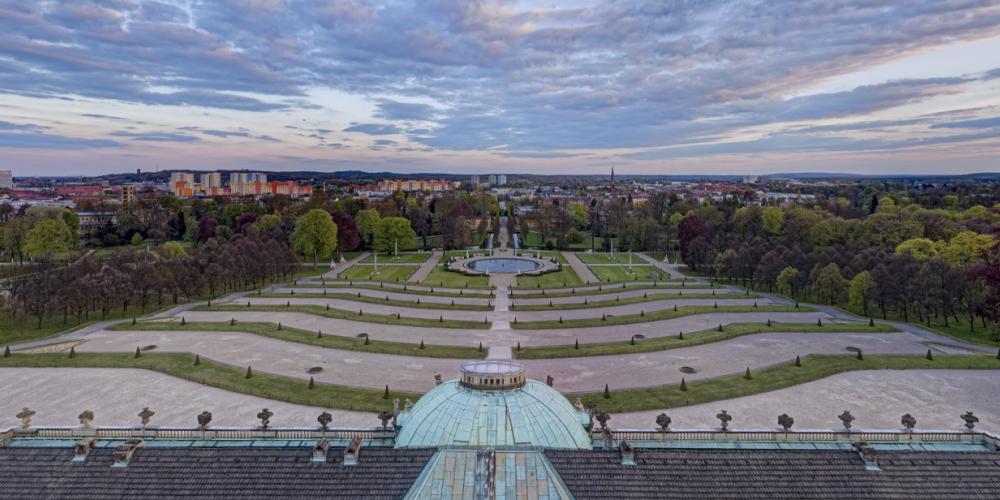
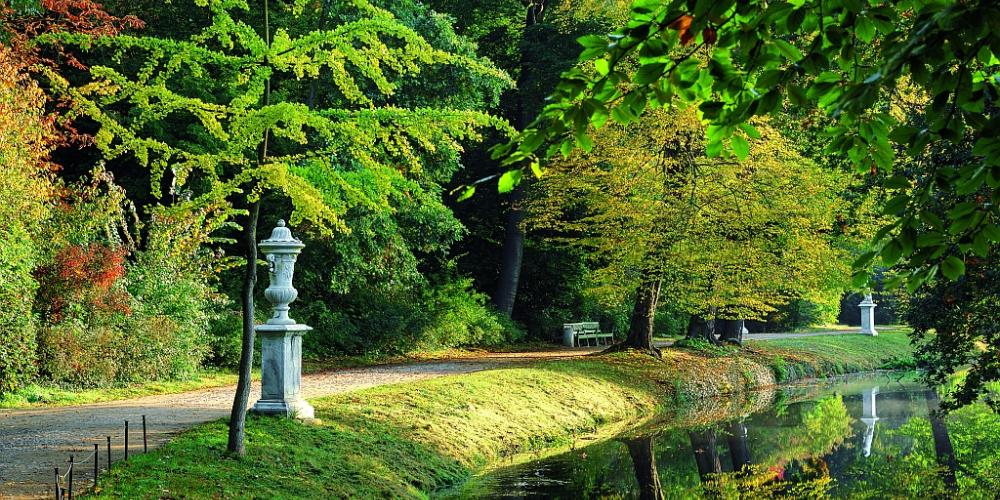
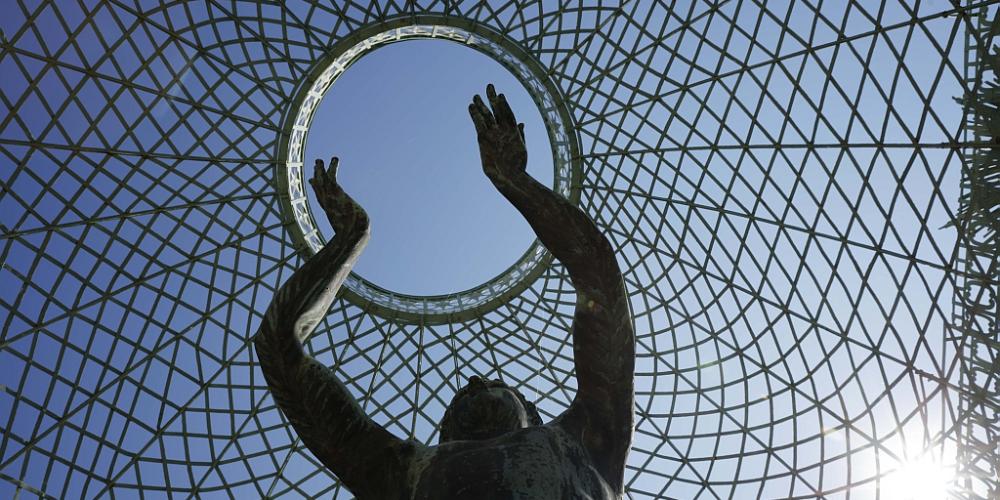

Sanssouci Park is an ensemble of palaces and garden complexes, which were built under Frederick the Great during the 18th century and were expanded under Frederick William IV in the 19th century. Sanssouci Palace, the summer residence of Frederick the Great, is its main focus. – © L.Seidel/SPSG
Frederick the Great wanted to cultivate plums, figs, and wine on Potsdam’s doorstep. In 1744, he had a terraced garden designed in Sanssouci Park for this reason. But, due to the exceptionally beautiful view, he conceived of a summer residence above the terraces just a year later. The New Palace and picture gallery were constructed in subsequent years, while the slopes of the grounds were used as flower and vegetable gardens.
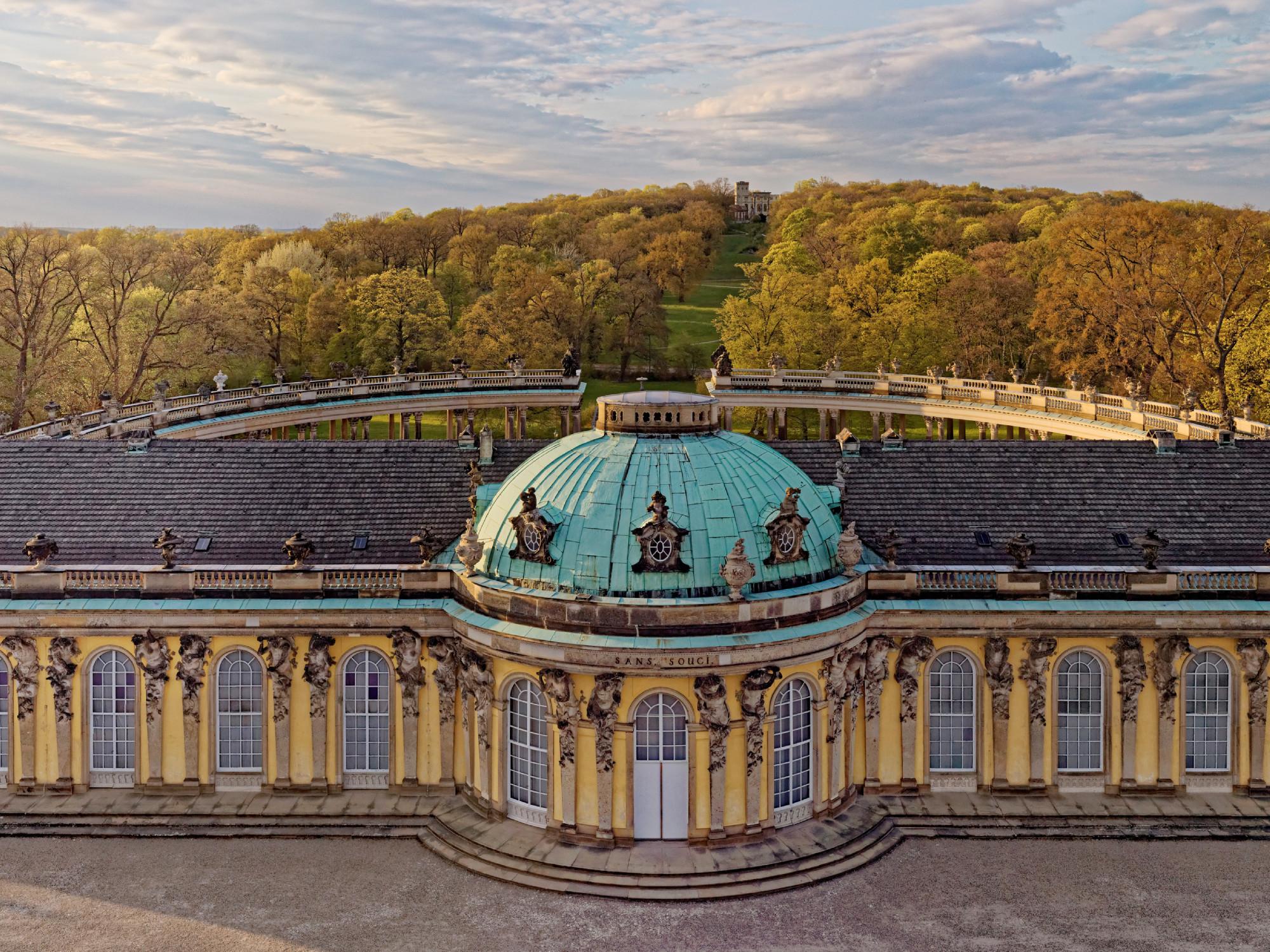
In contrast with the playful design of the garden façade, the north façade is majestic and commanding. A double row of eighty-eight Corinthian columns forms two colonnades in quarter-circle segments enclosing a semicircular cour d'honneur. The Ruins Hill is aligned with this axis to the north. - © A. Stiebitz / SPSG
No other palace is so closely linked with the personality of Frederick the Great as Sanssouci Palace. The king’s summer residence was ultimately his favorite place and sanctuary in difficult times.












Sanssouci Park is an ensemble of palaces and garden complexes, which were built under Frederick the Great during the 18th century and were expanded under Frederick William IV in the 19th century. Sanssouci Palace, the summer residence of Frederick the Great, is its main focus. – © L.Seidel/SPSG
Frederick the Great wanted to cultivate plums, figs, and wine on Potsdam’s doorstep. In 1744, he had a terraced garden designed in Sanssouci Park for this reason. But, due to the exceptionally beautiful view, he conceived of a summer residence above the terraces just a year later. The New Palace and picture gallery were constructed in subsequent years, while the slopes of the grounds were used as flower and vegetable gardens.

In contrast with the playful design of the garden façade, the north façade is majestic and commanding. A double row of eighty-eight Corinthian columns forms two colonnades in quarter-circle segments enclosing a semicircular cour d'honneur. The Ruins Hill is aligned with this axis to the north. - © A. Stiebitz / SPSG
Today, you will find Frederick II’s tomb on the palace hill. On the pile of ruins to the north of the palace, artificial ruins from the ancient world concealed a water basin. The king was most attached to the lavish waterworks, which only worked properly after the construction of the steam engine building in the 19th century.
The Baroque garden, which had gone out of fashion in the meantime, was redesigned in the style of a landscape park under Frederick the Great’s successors and was expanded by Frederick William IV by structures such as Charlottenhof Palace, the Orangery, and the Roman Baths. They were meant to bring part of Italy to his native country. Today, Sanssouci Park provides a breathtaking backdrop for events such as the Potsdam Court concerts and musical festivals.have chosen the plans of the most beautifulof what has been built in Europe, above all in Italy.
I have been able to have them executed
with small funds of my own.”
-Frederick II to de Catt, his reader, 1758
The Baroque garden, which had gone out of fashion in the meantime, was redesigned in the style of a landscape park under Frederick the Great’s successors and was expanded by Frederick William IV by structures such as Charlottenhof Palace, the Orangery, and the Roman Baths. They were meant to bring part of Italy to his native country. Today, Sanssouci Park provides a breathtaking backdrop for events such as the Potsdam Court concerts and musical festivals.have chosen the plans of the most beautifulof what has been built in Europe, above all in Italy.
I have been able to have them executed
with small funds of my own.”
-Frederick II to de Catt, his reader, 1758
Comments
Post a Comment